Discover the remarkable Piper Arrow III, a sophisticated single-engine aircraft that has revolutionized general aviation. Whether you’re a pilot looking to advance your skills or an aviation enthusiast, this comprehensive guide will explore the aircraft’s features, specifications, and what makes it a standout choice in its class.
Overview of the Piper Arrow III
The Piper Arrow III represents a significant evolution in the renowned PA-28 Cherokee family. This sophisticated single-engine aircraft distinguishes itself with several key features:
- Retractable landing gear for enhanced performance
- Excellent transition aircraft for advancing pilots
- User-friendly design with advanced capabilities
- Perfect balance between complexity and accessibility
- Ideal platform for developing advanced piloting skills
History and Development of the Piper Arrow III
Introduced in 1977, the Arrow III emerged as Piper’s response to growing market demands for sophisticated single-engine aircraft. The development journey focused on continuous innovation, incorporating aerodynamic improvements, more powerful engines, and updated avionics to create a superior training and personal aircraft.
Design and Features of the Piper Arrow III
The Arrow III’s design excellence combines functionality with outstanding performance. Key design elements include:
- Retractable landing gear for reduced drag and improved efficiency
- Sleek PA-28 Cherokee series profile enhancing stability
- Constant-speed propeller for optimized performance
- Ergonomic instrument panel design
- Spacious cabin configuration for pilot and passenger comfort
Specifications of the Piper Arrow III
As an advanced variant of the PA-28 series, the Arrow III boasts impressive specifications that define its class-leading position in the single-engine aircraft market.
Dimensions and Weight
| Specification | Measurement |
|---|---|
| Length | 24 feet 8 inches |
| Height | 7 feet 10 inches |
| Wingspan | 35 feet 5 inches |
| Empty Weight | 1,500-1,700 pounds |
| Maximum Takeoff Weight | 2,750 pounds |
| Useful Load | 1,000-1,200 pounds |
Engine and Performance
The Arrow III features the powerful Continental TSIO-360-FB engine, delivering impressive performance metrics:
- 200 horsepower turbocharged, fuel-injected engine
- Maximum cruise speed of 140 knots (161 mph)
- Service ceiling of 20,000 feet
- 72-gallon fuel capacity
- Range of approximately 880 nautical miles
Performance Insights of the Piper Arrow III
The Arrow III excels in both training and personal use scenarios, featuring retractable landing gear that significantly enhances aerodynamics and overall performance. Its predictable handling characteristics, combined with advanced features, make it an ideal platform for pilots transitioning from basic trainers to more sophisticated aircraft.
Cruise Speed and Range
The Piper Arrow III showcases exceptional cruise performance with its Continental TSIO-360-FB engine, delivering 200 horsepower for a cruise speed of 140 knots (161 mph) at optimal altitude. This impressive speed capability positions it as a leading contender in its class, making it ideal for efficient cross-country travel.
The aircraft’s range capabilities are equally noteworthy, featuring a 72-gallon fuel capacity that enables approximately 880 nautical miles under normal operating conditions. This extended range eliminates the need for frequent fuel stops, enhancing its versatility for both training missions and personal transportation needs.
Handling and Flight Characteristics
Building on the Cherokee series’ legacy, the Arrow III delivers exceptional handling characteristics that make it a natural choice for advancing pilots. Its predictable and stable flight dynamics create an ideal learning environment, particularly for those transitioning from simpler aircraft models.
- Retractable landing gear for advanced system management
- Controllable-pitch propeller enhancing performance flexibility
- Responsive control inputs balanced with inherent stability
- Forgiving flight characteristics for skill development
- Excellent platform for complex aircraft operations training
Technological Upgrades and Avionics
The Piper Arrow III has embraced modern aviation technology, featuring significant avionics upgrades that enhance its operational capabilities. These improvements include state-of-the-art navigation systems, improved situational awareness tools, and comprehensive flight management systems, rivaling equipment found in more sophisticated aircraft.
The integration of glass cockpit technology represents a major advancement, replacing traditional analog instruments with digital displays. This modernization provides pilots with enhanced information processing capabilities and a more comprehensive understanding of aircraft systems and environmental conditions.
Avionics Systems
- Garmin 650 GPS with touchscreen navigation and weather information
- Aspen PFD for comprehensive flight data display
- Garmin 345 transponder with ADS-B Out capability
- Sandia Labs backup attitude indicator
- Integrated weather and terrain awareness systems
The S-TEC 55X autopilot system stands as a cornerstone of the Arrow III’s modern avionics suite, offering advanced features such as altitude pre-select, vertical speed control, and GPS steering capabilities. This sophisticated system significantly reduces pilot workload during extended flights while maintaining precise aircraft control.
| Navigation Feature | Capability |
|---|---|
| WAAS/LPV | Precise approach guidance |
| TCAS 7.1 | Advanced traffic collision avoidance |
| CPDLC | Digital pilot-controller communications |
Cost and Market Considerations
The Piper Arrow III commands a premium position in the single-engine aircraft market, with new models priced at $504,988. This investment reflects its sophisticated design elements, including retractable landing gear and advanced avionics systems.
Ownership Costs
- Annual inspections: $2,000 – $4,000
- Fuel consumption: 10-12 gallons per hour at cruise
- Regular maintenance including oil changes and avionics updates
- Insurance premiums based on pilot experience and usage
- Hangar or tie-down fees for storage
Market Value and Resale
The market value of used Piper Arrow III aircraft varies significantly based on several key factors. A comprehensive evaluation considers multiple elements that influence the aircraft’s worth:
- Aircraft age and total flight hours logged
- Comprehensive maintenance history documentation
- Current state of installed equipment and avionics
- Overall condition and cosmetic appearance
- Recent upgrades and modifications
Well-maintained Arrow IIIs with low flight hours and updated avionics command premium prices in the used market. The aircraft’s established reputation for reliability and widespread adoption among flight schools and private owners contributes to its strong resale value.
| Value-Enhancing Upgrades | Market Impact |
|---|---|
| Glass Cockpit Installation | Significant value increase |
| ADS-B Compliance | Essential for modern operations |
| Modern Navigation Systems | Enhanced market appeal |
| Interior Refurbishment | Improved buyer interest |
When evaluating market value, it’s crucial to consider that the complex single-engine aircraft market responds to broader economic factors and aviation regulatory changes. Prospective buyers and sellers should obtain professional aircraft appraisals and current market analyses to accurately assess an Arrow III’s value under present market conditions.





Leave a Reply